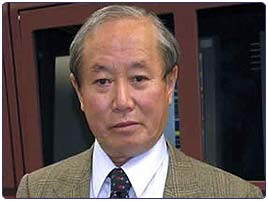Global Warming: Science Or Politics?
By Syun-Ichi Akasofu | Sep 13, 2007

Climate change reared its head again last week at the Asia-Pacific Economic Cooperation summit in Sydney, where participating heads of state struggled to reach a consensus on how to reduce emissions of carbon dioxide (CO2). The political squabbling, global warming true believers will say, stands in stark contrast to the scientific consensus that the greenhouse effect, a product of increasing CO2 in the atmosphere, is causing dramatic climate change. There’s just one problem with this view: There’s a lot less to that "scientific consensus" than meets the eye.
When millennial climate change patterns are mentioned, many people point to the "2,500 scientists from 130 countries" who have agreed that global warming is caused by the greenhouse effect. Yet not even the International Panel of Climate Change to which these people refer presents definitive scientific proof that the present warming is mostly caused by the greenhouse effect. It is simply an assumption that has morphed into a fact.
Since the physics behind CO2’s greenhouse effect has long been well known, the IPCC made the assumption that post-1900 warming was caused by it. They assembled a large number of scientists, mostly meteorologists and physicists (but, interestingly, not many climatologists), and tried to prove their hypothesis using supercomputer models. They have continued to work in this way despite important new evidence from ice-core data showing that temperature rises tend to precede CO2 increases by about 1,000 years. With all of the media attention that this assumption now enjoys, natural temperature changes have been mostly forgotten. Yet in reality they persist; they’re simply not being studied. This is the single greatest failing of the IPCC.
Meanwhile, a tree-ring study that was conducted to estimate historical temperatures was published in 1999. It showed that over the years, global temperatures had decreased gradually between the years 1000 and 1900, at which time they suddenly began to increase. Its graph was nicknamed "the hockey stick" because of its shape and it has been prominently displayed in the summary of the IPCC’s 2001 report.
After glancing at this figure, many policy makers, environmental advocacy groups and scientists around the world were convinced that the greenhouse effect began after 1900. But the hockey-stick graph was later discredited. Two Canadian statisticians found that the authors of the graph made a statistical error in dealing with the tree-ring data. After correcting the error, the two researchers could not reproduce the sharp upturn of the curve — even though they were using the very same data.
In understanding the present warming trend, it is absolutely essential to learn more about climate change in the distant past — or at least during the last 1,000 years. But many scientists, particularly younger ones, prefer to work only with data collected after 1975, when satellite data became available. With only 30 years worth of data, their results are little more than climatological snapshots of what is really a slow, long-term process. The latest accurate satellite images of sea ice distribution in the Arctic Ocean today can be obtained by clicking on a computer screen; but it is impossible to obtain such quality data for periods before 1975.
It is for this reason that only a minority of scientists are studying natural climate change, including multi-decadal oscillations and centurial climate change, which is the true realm of climatology. These areas have not been priorities for the IPCC.
They should be. During winter, England’s Thames River would once freeze solid. This occurred on and off between 1400 and 1800 during a period called the "Little Ice Age" when temperatures dropped by as much as 1.5 degrees Celsius, which came after the medieval warm period around 1000. The anomaly of the Little Ice Age corrected itself, of course, through something called rebounding. The rebounding rate is estimated at 0.5 degrees Celsius per century. Since our present warming rate is roughly 0.6 degrees Celsius per century, the greenhouse effect caused by CO2 may represent only a 0.1 degree Celsius increase in temperature over the course of a century.
There is no doubt that global warming is in progress. But much of it can be attributed to the rebounding effect from the Little Ice Age. Recovering from a cool period is, of course, warming — but it is nothing to panic about. Ice core data from the Greenland ice sheet show many periodic warming and cooling periods during the last 10,000 years. The present warming phase is far from the warmest.
Scientists have no clear knowledge of the cause of the Little Ice Age and of the subsequent rebound; or of the Big Ice Age; or of a warm period when the Arctic Ocean had no ice; or of the medieval warming period. In fact, IPCC scientists do not understand the causes of the rapid increase of temperature from 1910 to 1945; or the decrease from 1945 to 1975, when CO2 levels were rising. Without understanding these recent changes, it is premature for the IPCC to jump to the conclusion that CO2 is the main cause of the last 30 years of global warming.
Many people claim scientists proved the greenhouse effect with models run on supercomputers. But a supercomputer is not a crystal ball. Scientists merely enter observed (or expected) CO2 amounts into a computer and, using an algorithm, a projection emerges. No computer can accurately represent such a gigantic system as the Earth with all its unknown processes, such as the causes of the medieval warm period and the Little Ice Age. Therefore, no supercomputer, no matter how powerful, is able to prove definitively a simplistic hypothesis that says the greenhouse effect is responsible for warming.
Most people, including scientists who specialize in climatology, are not aware of this weakness. In fact, the whole science of climate change based on supercomputers and algorithmic models is still in its infancy. A supercomputer cannot provide an approximate estimate of the temperature in 2050 or 2100 because scientists are not able to instruct it with all the the unknown processes that may be at play. Any conclusions drawn from such results — which may be seen as nothing more than an academic exercise — cannot and should not serve as hard facts on which to base major international policies.
The booming Far East is home to a series of economies which have become the factories of the developed world. This arrangement provides economic benefits but also makes it impractical for Asian nations to reduce their CO2 output. In fact, many political leaders in China have declared it hypocritical for the Western world to make such a demand. A truly environmentally friendly policy would invest in innovation — in order to increase energy efficiency — and not try to stifle whole economies by attempting to do away with CO2 based on faulty science and wild assumptions. It would be better for Asian countries such as China, India and South Korea to invest in researching nuclear fusion as a future energy source.
In the meantime, the integrity of climatology as a respectable science has to be rehabilitated by bringing it back from its present confused state and separating it entirely from politics. Only then can real progress be made in predicting future climate patterns. At the same time, environmental advocacy groups should return to their original goal of protecting the environment from those things over which humanity truly does have control.
This essay is adapted from an article appearing in the Sept. 2007 issue of the Far Eastern Economic Review.












